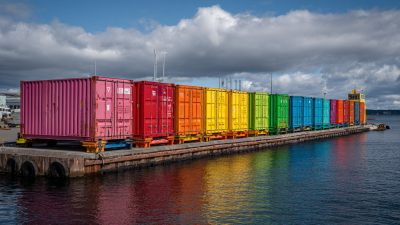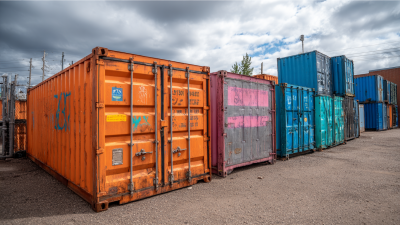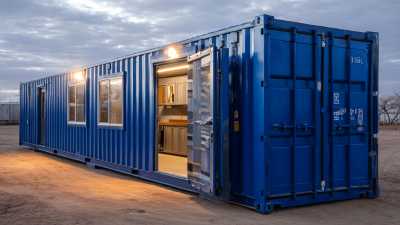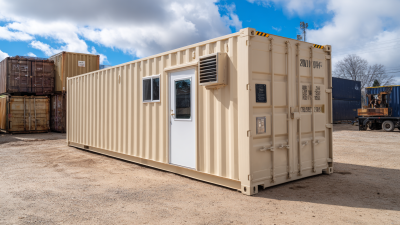In recent years, the integration of transport containers into sustainable living and urban gardening has emerged as a groundbreaking trend, reshaping how communities approach environmental responsibility and food production. According to the Global Recycling Foundation, approximately 50 million shipping containers are currently in use worldwide, with a significant portion being repurposed for various innovative applications, including green urban spaces. These transport containers provide versatile, cost-effective solutions that minimize waste while promoting eco-friendly practices. A report from the United Nations Environment Programme highlights that urban areas, which are expected to house 68% of the world’s population by 2050, will increasingly rely on sustainable practices to combat climate change and resource depletion. By exploring ten unique uses of transport containers, we can unlock potential strategies for enhancing urban resilience and fostering sustainable lifestyles, ultimately contributing to a greener future.

The evolution of urban living spaces has taken a significant turn with the innovative use of transport containers, particularly in the context of sustainable architecture. Vertical tiny homes have emerged as a trend, allowing aspiring homeowners to enjoy skyline views while maximizing their living space. Recent studies indicate that microhousing projects can reduce construction costs by up to 40%, making them an attractive option for city dwellers seeking affordability without compromising on style or sustainability. Projects like Urban Rigger in Copenhagen illustrate how repurposed shipping containers can create eco-friendly housing solutions that not only address the housing crisis but also promote recycling and reduced waste in urban environments.
Furthermore, the trend of incorporating nature into high-rise living is gaining momentum, with many urban residents transforming their balconies into green retreats. This movement aligns with the broader trend of slow living, reflecting a commitment to wellness and a desire for personal connection with nature. Research shows that access to greenery can significantly enhance mental well-being, making these nature-infused nooks not just aesthetically pleasing but essential for health in dense urban settings. As we witness more creative architectural solutions, such as using container homes and micro-units, the way we approach urban living is being redefined, offering a glimpse into a sustainable future that harmonizes style, space, and environmental consciousness.
This chart illustrates various innovative uses of transport containers in sustainable living and urban gardening, showcasing how they redefine urban living spaces through creative applications.
Vertical gardens are rapidly gaining popularity as a practical solution for urban greenery, especially as cities become denser and green spaces dwindles. These innovative gardens, often constructed from repurposed transport containers, are not only aesthetically pleasing but also offer significant environmental benefits. According to a report by the World Green Building Council, incorporating vertical gardens can reduce the urban heat island effect by up to 5°C, thereby lowering energy consumption for heating and cooling by about 15% in buildings.
Utilizing containers for vertical gardens allows city dwellers to maximize limited space while cultivating a diverse range of plants, from herbs to flowers. A study published in the Journal of Urban Agriculture highlights that urban residents engaging in container gardening can increase their access to fresh produce by an impressive 30%. Moreover, these green installations can improve air quality by capturing particulate matter and releasing oxygen, contributing to healthier urban environments. The creative use of transport containers in this context not only aligns with sustainable living initiatives but also promotes a sense of community as neighbors share gardening tips and experiences, fostering social bonds in increasingly isolated urban settings.
Aquaponics systems present an innovative approach to sustainable food production by integrating aquaculture and hydroponics within transport containers. This method utilizes the symbiotic relationship between fish and plants, where fish waste provides organic nutrients for plant growth, while the plants help to filter and purify the water for the fish. According to a report by the Food and Agriculture Organization (FAO), aquaponics can yield higher productivity rates per square foot compared to traditional farming methods, making it an ideal solution for urban gardening in limited spaces.
Transport containers, which are often repurposed as agricultural spaces, can be transformed into self-sustaining aquaponics systems. A study by the Global Aquaponics Alliance found that these systems can reduce water usage by up to 90% compared to conventional farming, addressing critical challenges like water scarcity. Moreover, the controlled environment of a container garden allows for year-round cultivation of fresh produce, thus contributing to local food security. This convergence of sustainable practices within urban landscapes not only enhances food production efficiency but also promotes eco-friendly living practices in metropolitan areas.
Urban playgrounds play a pivotal role in fostering community engagement and promoting sustainable living. Recent investments, such as the $164 million allocation to transform the West Village Corridor, highlight the growing focus on merging urban recreation with ecological responsibility. These spaces not only provide vital areas for physical fitness and cultural activities but also serve as vital green zones within densely populated cities. With over 100,000 square feet dedicated to both indoor and outdoor recreation, these community hubs provide a model for integrating nature with urban development.

Moreover, innovative approaches like converting transport containers into recreational facilities can further enhance urban spaces. Research has shown that urban parks and green areas contribute significantly to disaster resilience and environmental sustainability. As cities explore circular living, parks are becoming laboratories for zero-waste strategies. Creative repurposing of underutilized spaces, including parking lots and container terminals, demonstrates how municipalities are strategically creating vibrant community hubs that cater to recreational needs while simultaneously promoting environmental stewardship.
Tips: To get involved in community recreation initiatives, consider advocating for local projects that utilize container transformations. Engaging with community design centers can lead to innovative space management ideas that prioritize green practices. Additionally, participating in local urban gardening collaboratives not only beautifies areas but strengthens community bonds.
The rise of solar-powered container offices exemplifies the innovative intersection of sustainability and modern workspaces. These repurposed transport containers can be transformed into fully functional offices equipped with renewable energy sources. By harnessing solar panels, these structures not only reduce the carbon footprint associated with traditional office buildings but also promote energy independence.
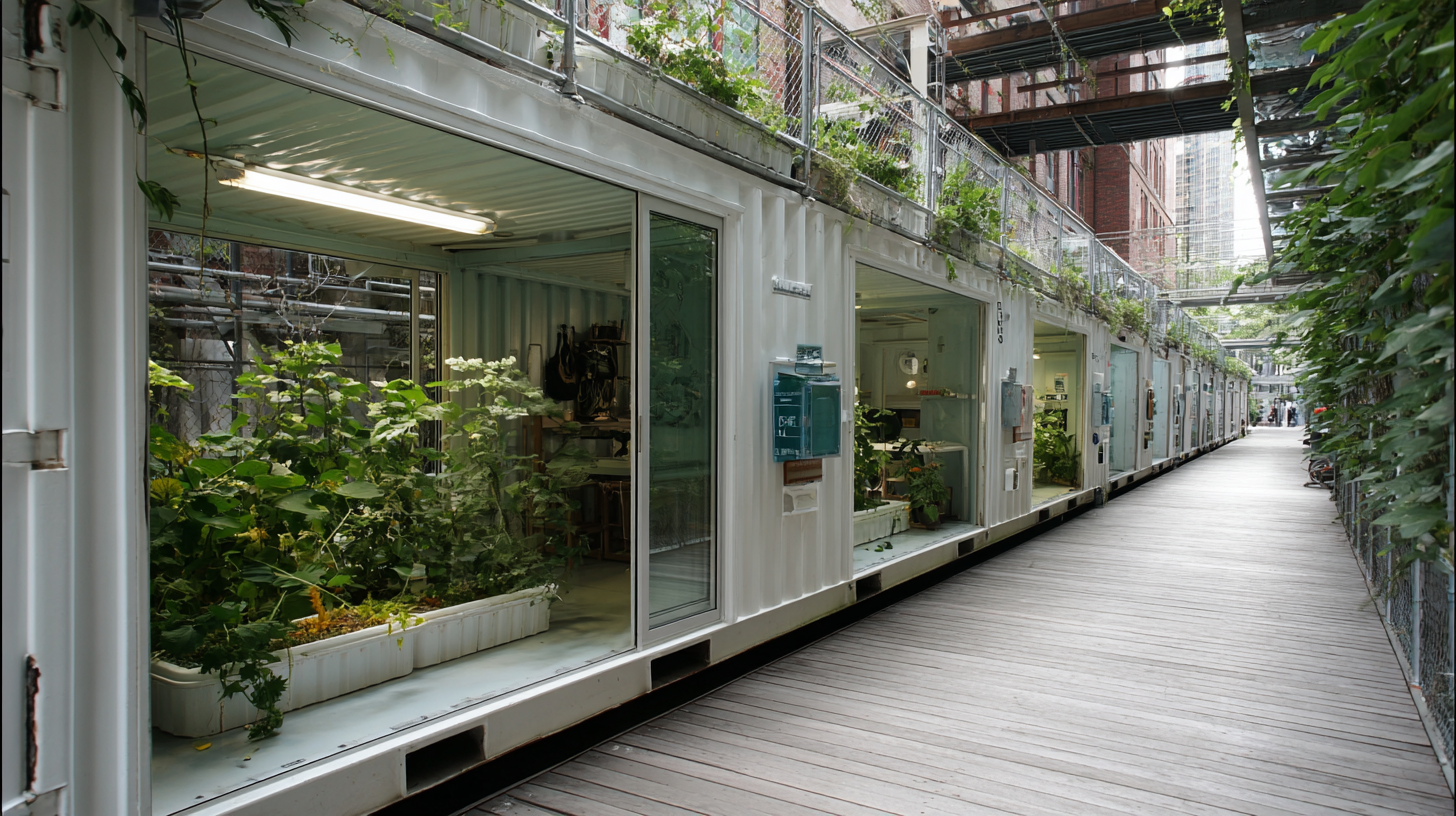
Businesses can operate in a more environmentally friendly manner while enjoying reduced energy costs, making this a compelling option for forward-thinking enterprises.
Moreover, container offices can be strategically placed in urban gardens or green spaces, creating a seamless blend of work and nature. These spaces foster creativity and well-being, allowing employees to connect with their environment.
The adaptability of transport containers means they can be customized to meet diverse needs—from ergonomic furniture to high-tech amenities—all while maintaining a commitment to eco-friendly practices. This innovative approach not only supports sustainable living but also encourages a culture of environmental consciousness in the workplace, paving the way for a greener future.
